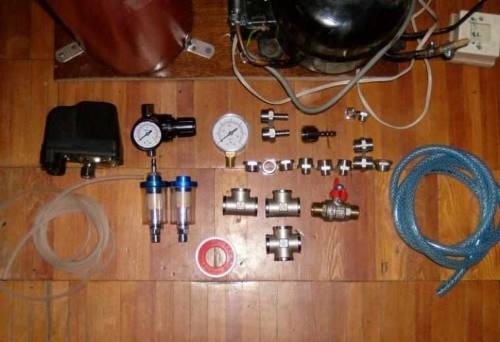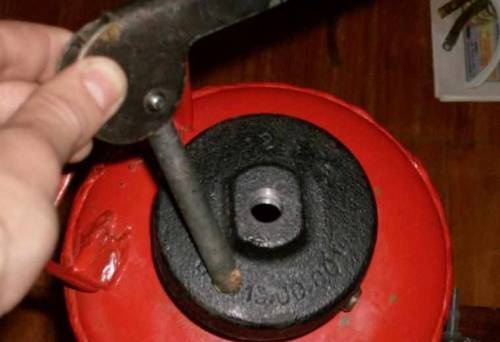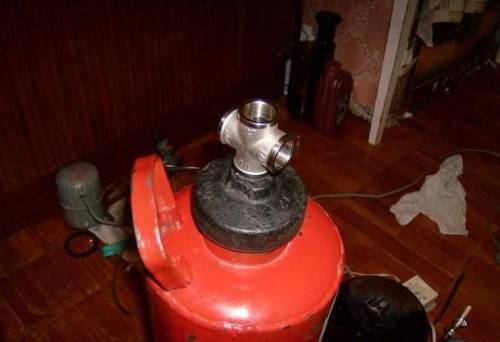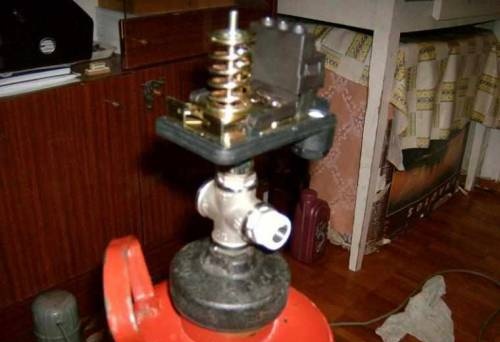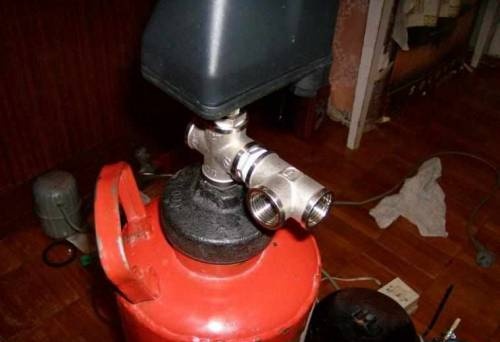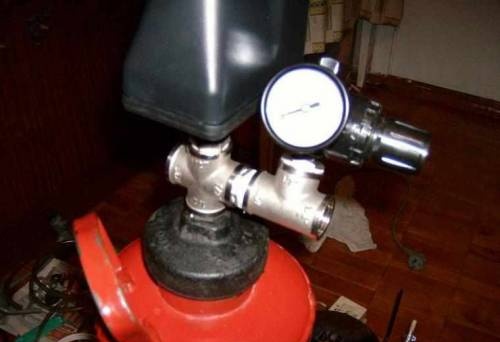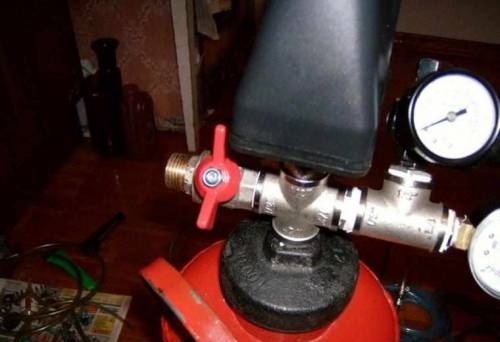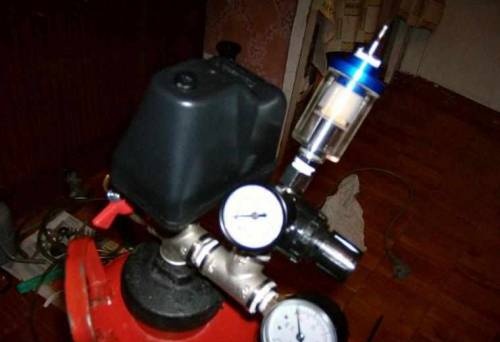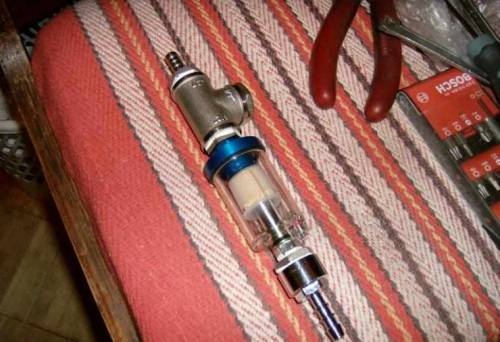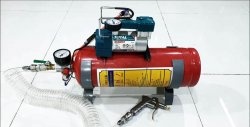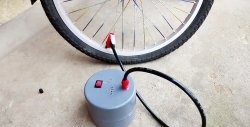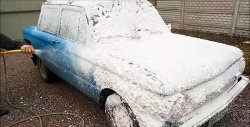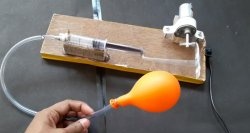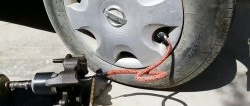As a receiver, an OHP-10 fire extinguisher was obtained with a declared volume of 8.7 liters, which was actually measured to be 10.5 liters. I got the fire extinguisher during my internship at the enterprise. I just went up to the head of the fire safety department, or xs as they call him, and asked if there was a decommissioned fire extinguisher. They gave it.
I’ll tell you right away, don’t even think about emptying its contents in the bathroom. While I was dragging him home, I went behind the garages and let him out there (it will bring a lot of childish pleasure ;). We also purchased a pressure switch PM5, intended for water, but also suitable for air. I also bought two water separator filters, and one automobile fuel filter, fine (I immediately installed it at the inlet of the compressor.
I bought all sorts of adapters, crosses, and also a reinforced PVC hose with an internal diameter of 10 mm. See the photo for everything included in the set. I also purchased a valve (at first I thought that I would use it to regulate the pressure, and that it was no different from a reducer (naive).
After I figured out that the valve and the reducer are still somewhat different things, I bought a reducer with a pressure gauge, and a separate pressure gauge to measure the pressure inside the receiver.We also bought a thin hose of whatever diameter at a pet store, costing as much as 10 rubles/meter :))). It’s either silicone or whatever, but it’s very flexible, light and durable; there’s nothing better for connecting to an airbrush.
And of course, where would we be without FUM tape, which is sold in any plumbing store.
First of all, we screw the balloon to the base (I think you can figure it out yourself, there are no tricks here). We take out all the good stuff from the lid, and from the inside of the fire extinguisher, leaving only the container itself and the lid.
In the hole in the cast iron lid we cut a pipe thread, 1/4 inch. We also wrap FUM tape around the wide thread on the cylinder and make a rubber gasket (in theory there should be one, I had one too, but I put it somewhere, and in the end I cut it out myself from a car inner tube, after construction I found my original one))) ) and screw on the cast iron lid.
Screw an adapter from 1/4 HP to 1/2 HP into the hole in the cover.
Next, we screw on the 1/2-inch crosspiece (from now on I’ll just write 1/2), of course, all the connections are with the FUM tape, I won’t mention this anymore.
We screw the pressure switch into the crosspiece through the 1/2HP-1/4HP adapter, and screw in the 1/2HP-1/2HP adapter from the side.
Next, screw the tee on the side.
To it on one side we screw a gearbox with a 1/4HP thread through a 1/2HP-1/4BP adapter.
From the other end, also through the 1/2HP-1/4VN adapter, we screw a pressure gauge, which has a 1/4HP thread. On the opposite side of the cross we screw in a valve (to bleed air from the cylinder), which has a 1/2 HP thread.
We screw a filter-moisture separator to the gearbox, which has a 1/4 HP thread and goes straight to the gearbox. The nuance here is that the filter must be positioned correctly (maintain the top and bottom), and make sure that there is a drain hole at the lowest point.
Next, we make a line for another filter, from the inlet side there is a 1/2BP fitting, which is connected through an adapter 1/2HP-1/4BP, screw it onto the filter having a 1/4HP thread. I messed up the output hole a little, because there were extra parts, and there weren’t some needed ones, so in the end it turned out like this.
A 1/4HP-1/2HP adapter is screwed into the hole in the 1/4HP filter, a tee is screwed onto it (I had an extra one), on one side of which a plug with 1/2HP is screwed in, on the other side of the tee opposite the filter a fitting is screwed in 1/2HP.
ATTENTION: I did it so cleverly because there were extra parts, so that you don’t make this mistake, do this: a 1/4HP-1/2HP adapter is screwed into the outlet hole, and a fitting for the hose with a 1/2HP thread is screwed onto it. The layout below will be given specifically for this option.
Next, a reinforced hose is ideally suited to the hole with an external thread of unknown cross-section and pitch (I couldn’t find it) that comes out of the fire extinguisher as an outlet nozzle, which we secure on top with a clamp.
At the other end of the hose we insert the fitting from the filter and also secure it with a clamp.
Next, we again insert the reinforced hose from the incoming fitting of the filter and bring it to the outlet pipe of the compressor. I think you can figure out how to secure this goodness there. I have a cunning system of several gaskets there and everything is clamped on top with a clamp.
Finally, we screw a 1/4HP fitting into the outlet hole of the 1/4HP filter, onto which we place a silicone tube that fits almost perfectly on it, and does not even require compression with a clamp, the second end of the tube is already connected to the airbrush.
Since the pressure after the reducer is small compared to the receiver, the tube can withstand it without any effort. At the inlet of the compressor, as I already said, a car filter is installed to clean the air. Oil...
Regarding the oil change, there are three pipes coming out of the compressor. one is inlet, the other is output, the third is sealed - and is for adding oil. Here we are tearing it apart (I just bit with pliers), but be careful not to get any sawdust inside, otherwise the motor may be finished.
Drain the oil from there. I honestly didn’t measure how much I drained, but it was something like a glass. I poured back car oil of the formula 10W40, about 350 grams in volume. IMHO, automobile oil is better because, firstly, it has a bunch of additives that protect against any kind of threshing floor, and secondly, unlike spindle oil, it does not “absorb” moisture.
